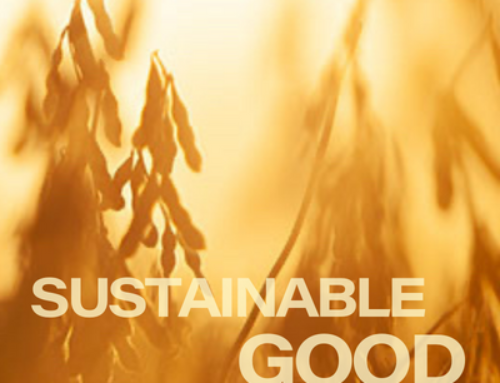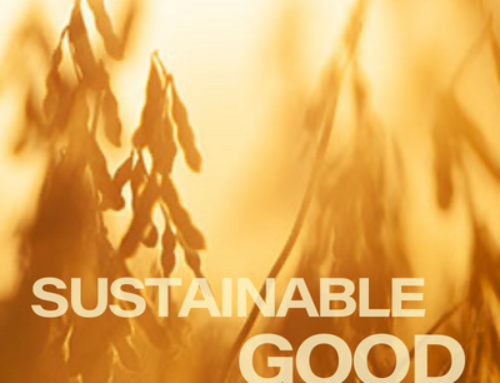An Interview With Megan Baskerville, IL Ag Program Director, and Josh Tooley, IL Ag Program Manager
Illinois Soybean Association: Who is The Nature Conservancy?
The Nature Conservancy: The Nature Conservancy (TNC) is a global environmental nonprofit working to create a world where people and nature can thrive. Founded in the U.S. through grassroots action in 1951, TNC has grown to become one of the most effective and wide-reaching environmental organizations in the world. Thanks to more than a million members and the dedicated efforts of our diverse staff and over 400 scientists, we impact conservation in 76 countries and territories: 37 by direct conservation impact and 39 through partners.
Illinois Soybean Association: What is important to TNC?
The Nature Conservancy: Our mission is to conserve the lands and waters on which all life depends. To achieve this, we must boldly address the biodiversity and climate crises over the next decade. Guided by science, we create innovative, on-the-ground solutions to tackle climate change, conserve lands, waters and oceans at an unprecedented scale, provide food and water sustainably and help make cities more sustainable.
In the U.S., farmers and ranchers are among our greatest conservation allies. We are working across the agriculture and food supply chains to help guide and incentivize large-scale adoption of regenerative practices by farmers and ranchers to achieve resilient, climate-smart working lands that benefit people and nature.
Illinois Soybean Association: Why is agriculture important to TNC?
The Nature Conservancy: Agriculture has a significant footprint on our planet. In the U.S. alone, agriculture production accounts for more than half of the United States’ land base, including 75% of Illinois’ land use. Food production is essential to sustain humankind and one of the most basic ways we interact with nature, so it’s no surprise that the agriculture industry is poised to play a major role in addressing some of our biggest conservation challenges. One of the most important ways we, in Illinois and across the world, can tackle threats to climate, water and biodiversity is to change the way we produce our food and fiber. Farmers and ranchers have an enormous opportunity to be part of the conservation solution by adopting and championing regenerative agriculture practices that support large-scale restoration of lands and waters.
We need farmers to be successful; the world depends on it. TNC strives to advance nature-based, farmer-led solutions that are both economically and environmentally sustainable for growers, communities, and nature.
Illinois Soybean Association: What are important regenerative practices TNC promotes?
The Nature Conservancy: The global food system is a $10 trillion economy that connects 7.5 billion consumers with more than 1 billion food producers – from farmers and ranchers to pastoralists and fish harvesters. The U.S. Midwest is a key player in the global system, with more than 130 million acres of farms planted, most commonly, in corn and soybeans, as well as significant livestock production. Unfortunately, agriculture and food systems are taking their toll on the environment, accounting for 24% of global greenhouse gas emissions (both direct and indirect) and 80% of global land-use change, including deforestation and land conversion. But farmers and ranchers have an enormous opportunity to reverse these trends and be part of the solution through regenerative agriculture practices like cover crops, no-till, crop rotation, nutrient management, and edge of field practices.
For more than 30 years, TNC has worked with producers in the Midwest, and around the country, to help create a more resilient agriculture system, one that is profitable, climate-smart, and works in harmony with nature. We test different strategies and learn what financial, technical, and collaborative approaches are effective and could be replicated to help create broader change in agriculture. Our aim is to help producers transition to a regenerative agriculture system that will benefit their operations, their communities and contribute to a healthier planet for us all.
Illinois Soybean Association: What does TNC do to help promote soil health and conservation drainage?
The Nature Conservancy: Healthy soil is essential to food production and delivers a plethora of environmental benefits, including soil carbon storage, improved water quality and reduced erosion. TNC has worked for decades to support innovation in soil health and ensure farmers have broad access to the resources and knowledge that can drive adoption of regenerative practices. (Read the reThink Soil Roadmap: nature.org/rethinksoil.)
In Illinois for example, TNC has worked in the Mackinaw River Watershed for more than 20 years studying the water quality effects of various cropping systems. This work led our science team to investigate how tile water can be treated efficiently and effectively* before entering our local waterways. Results from one of the research projects was just published in the Journal of Soil and Water, documenting a 12-year study on effectiveness of tile-treatment wetlands.
*Depending on a field’s topography and tile system layout, a number of practices can be utilized to mitigate nitrate loss, including tile-treatment wetlands, saturated buffers, controlled drainage, or bioreactors.
Recognizing that a whole-farm approach to conservation is essential to achieve a regenerative system, TNC worked with partners to develop an Edge of Field Roadmap to advance the adoption of a suite of practices to better manage water and filter nutrients and sediments in runoff from the fields. Read TNC’s Edge of Field Roadmap here: nature.org/edgeoffield.
Illinois Soybean Association: Does soil health make a difference in soy production?
The Nature Conservancy: Soil health is critical for maintaining stable long-term soybean yields. Currently, more intense precipitation and longer periods between precipitation are negatively impacting yield potential in Illinois. Soybeans yields are drastically reduced when soil moisture is limited, and canopy temperatures exceed 85° F during the reproductive stages. The principles of soil health (soil cover, minimal disturbance, live roots, and plant diversity) can directly impact these yield limiting factors. Healthier soils overtime will result in greater soil organic matter and water infiltration/retention while reducing canopy temperatures and transpiration rates. These soil factors will increase yield stability during periods of extreme weather as well as during average seasons.
Illinois Soybean Association: How can Illinois farmers incorporate Best Management Practices (BMPs) in the easiest way?
The Nature Conservancy: The best place to start when implementing soil health BMPs is assessing what the current problems your operation is trying to overcome. Once sticking points like soil crusting, compaction, erosion, and/or water pooling are identified, begin working with a crop adviser to decide what soil health BMPs can positively impact the identified problems. From there, working with equipment and input suppliers to determine changes needed to implement the selected BMPs is critical to having success. The key to success when incorporating soil health BMPs is to consider the effects these practices will have on the operation and adjusting other practices appropriately.
Illinois Soybean Association: What are some best practices when it comes to sustainable soil health?
The Nature Conservancy: Common soil health best practices in Illinois include no-till, cover crops, diverse rotations, and precision nutrient management. These practices alone or in combination don’t fit all operations, so each operation should consider their goals and challenges to pick the appropriate set of practices to adopt. To sustain these practices, a grower must commit to them like any other system change such as a new seed trait platform. The decision to adopt a soil health BMP will impact a large number of other practices on the farm so making management decisions that take into account the newly incorporated practices is critical. Then remember that any change will present new challenges and persistence will result in success long-term. A good network including a crop adviser, other farmers, and suppliers will help work through challenges, but growers will have to continue practices long term to see the benefits of soil health.
Illinois Soybean Association: Who are you partnered with in the ag sustainability world?
The Nature Conservancy: Guided by science and grounded by decades of local on-the-ground experience, we maximize our ability to affect change by bringing together real-world solutions, policy expertise, sustainable financing, and collaborative partnerships to drive large-scale adoption of regenerative agriculture practices. Our collaborations are diverse and span conservation and science organizations, food and agriculture businesses, and policy initiatives. In Illinois, for example, TNC joined with 7 other groups in 2017 to form the Illinois Sustainable Ag Partnership to drive increased alignment on pragmatic advice on the implementation of soil health and conservation drainage practices.
Illinois Soybean Association: What is the Illinois Sustainable Ag Partnership (ISAP)?
The Nature Conservancy: The Illinois Sustainable Ag Partnership (ISAP) brings together diverse member organizations who work collaboratively to encourage the adoption of sustainable and profitable production practices that improve soil health and restore local waters. One of the Partnership’s primary efforts is to support Illinois agriculture in meeting the goals of the Illinois Nutrient Loss Reduction Strategy (NLRS) by utilizing data and consistent messaging to increase the technical capacity of ag professionals while minimizing risk and increasing profits for farmers. ISAP envisions Illinois as a sustainable agriculture system that results in improved soil health, water quality, profitable and resilient ag systems, and thriving communities.
Currently TNC’s IL Ag Program Director Megan Baskerville serves as ISAP’s chair.
Illinois Soybean Association: Why is ISAP important?The Nature Conservancy: ISAP members work collaboratively to provide IL farmers and advisors the best available resources to implement soil health and conservation drainage practices. This means combing through research, field notes, and more to curate information most applicable to IL.
Illinois Soybean Association: What are future plans for ISAP in 2022?
The Nature Conservancy: 2022 is already shaping up to be a busy year for ISAP! Farmers, advisors, and conservation practitioners are encouraged to check out ISAP’s full list of events on its website, https://ilsustainableag.org/get-involved/events.
We’re very excited to be bringing back our Risk Management Webinar Series for 2022 . Starting June 13, expert panels will join us for 3 weeks, highlighting the production benefits of soil health and conservation drainage practices.

